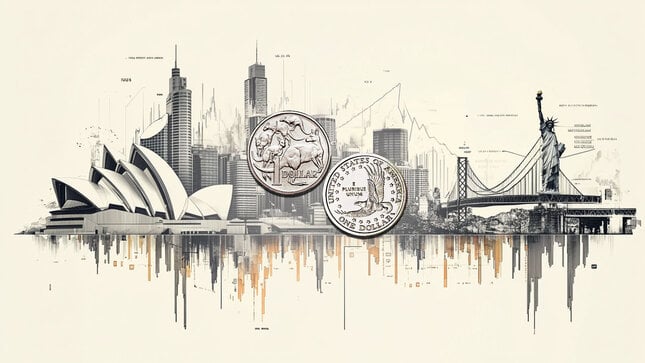Following the publication of the high-impact China’s first-quarter growth and December activity data, the National Bureau of Statistics (NBS) expressed its outlook on the economy during its press conference on Wednesday.
Key quotes (via Reuters)
- Economy at good start with continued recovery momentum as policies gain traction.
- External environment more complex and serious.
- Unfavorable impact from the international environment on China’s economy is deepening.
- Q1 data underscores China's strong resilience and potentials.
- Protectionism is rapidly rising globally, world economic order has been severely damaged.
- Resolutely opposes US tariffs which are against economic rules, WTO rules.
- High US tariffs will bring about some pressures on China’s trade and economy.
- US tariffs will not change the long-term improving trend in China’s economy.
- China is able and has confidence in dealing with external challenges and achieving its economic growth target.
- Macroeconomic policies will become more proactive this year.
- China has 'rich' policy toolkit to support the economy.
- China issued nearly 1 trillion Yuan in special local bonds in Q1, helped boost investment.
- Will take measures to promote reasonable rises in consumer prices.
- Crucial to keep consumer prices within a reasonable range.
- Low prices could affect corporate profits and employment.
Market reaction
AUD/USD trades firmer near 0.6350, adding 0.10% on the day, at the press time.
Australian Dollar FAQs
One of the most significant factors for the Australian Dollar (AUD) is the level of interest rates set by the Reserve Bank of Australia (RBA). Because Australia is a resource-rich country another key driver is the price of its biggest export, Iron Ore. The health of the Chinese economy, its largest trading partner, is a factor, as well as inflation in Australia, its growth rate and Trade Balance. Market sentiment – whether investors are taking on more risky assets (risk-on) or seeking safe-havens (risk-off) – is also a factor, with risk-on positive for AUD.
The Reserve Bank of Australia (RBA) influences the Australian Dollar (AUD) by setting the level of interest rates that Australian banks can lend to each other. This influences the level of interest rates in the economy as a whole. The main goal of the RBA is to maintain a stable inflation rate of 2-3% by adjusting interest rates up or down. Relatively high interest rates compared to other major central banks support the AUD, and the opposite for relatively low. The RBA can also use quantitative easing and tightening to influence credit conditions, with the former AUD-negative and the latter AUD-positive.
China is Australia’s largest trading partner so the health of the Chinese economy is a major influence on the value of the Australian Dollar (AUD). When the Chinese economy is doing well it purchases more raw materials, goods and services from Australia, lifting demand for the AUD, and pushing up its value. The opposite is the case when the Chinese economy is not growing as fast as expected. Positive or negative surprises in Chinese growth data, therefore, often have a direct impact on the Australian Dollar and its pairs.
Iron Ore is Australia’s largest export, accounting for $118 billion a year according to data from 2021, with China as its primary destination. The price of Iron Ore, therefore, can be a driver of the Australian Dollar. Generally, if the price of Iron Ore rises, AUD also goes up, as aggregate demand for the currency increases. The opposite is the case if the price of Iron Ore falls. Higher Iron Ore prices also tend to result in a greater likelihood of a positive Trade Balance for Australia, which is also positive of the AUD.
The Trade Balance, which is the difference between what a country earns from its exports versus what it pays for its imports, is another factor that can influence the value of the Australian Dollar. If Australia produces highly sought after exports, then its currency will gain in value purely from the surplus demand created from foreign buyers seeking to purchase its exports versus what it spends to purchase imports. Therefore, a positive net Trade Balance strengthens the AUD, with the opposite effect if the Trade Balance is negative.
Information on these pages contains forward-looking statements that involve risks and uncertainties. Markets and instruments profiled on this page are for informational purposes only and should not in any way come across as a recommendation to buy or sell in these assets. You should do your own thorough research before making any investment decisions. FXStreet does not in any way guarantee that this information is free from mistakes, errors, or material misstatements. It also does not guarantee that this information is of a timely nature. Investing in Open Markets involves a great deal of risk, including the loss of all or a portion of your investment, as well as emotional distress. All risks, losses and costs associated with investing, including total loss of principal, are your responsibility. The views and opinions expressed in this article are those of the authors and do not necessarily reflect the official policy or position of FXStreet nor its advertisers. The author will not be held responsible for information that is found at the end of links posted on this page.
If not otherwise explicitly mentioned in the body of the article, at the time of writing, the author has no position in any stock mentioned in this article and no business relationship with any company mentioned. The author has not received compensation for writing this article, other than from FXStreet.
FXStreet and the author do not provide personalized recommendations. The author makes no representations as to the accuracy, completeness, or suitability of this information. FXStreet and the author will not be liable for any errors, omissions or any losses, injuries or damages arising from this information and its display or use. Errors and omissions excepted.
The author and FXStreet are not registered investment advisors and nothing in this article is intended to be investment advice.
Recommended content
Editors’ Picks

Gold price extends fresh record run toward $3,500
Gold price continues to build on its record rally, closing in on the $3,500 mark in Asian trading on Tuesday. Investors continue to flock to safety in the traditional store of value, the Gold price, amid no confidence in the US Dollar and Trump’s attacks on Fed Chairman Powell.

AUD/USD bounces back toward 0.6450 as US Dollar resumes downside
AUD/USD picks up fresh bids toward 0.6450 in the Asian session on Tuesday. The US Dollar fizzles its bounce and resumes downside amid uncertainty over Trump's trade policies and the weakening confidence in the US economy. Concerns about the rapidly escalating US-China trade war could act as a headwind for the Aussie.

USD/JPY mires in multi-month low near 140.00
USD/JPY languishes in seven-month lows near 140.00 in the Asian session on Tuesday. Trade war concerns, global recession fears, hopes for a US-Japan trade deal, and the divergent BoJ-Fed bets could continue to underpin the Japanese Yen while the US Dollar selling resumes.

ARK Invest integrates Canada's 3iQ Solana Staking ETF into its crypto funds
Asset manager ARK Invest announced on Monday that it added exposure for Solana staking to its ARK Next Generation Internet exchange-traded fund and ARK Fintech Innovation ETF through an investment in Canada's 3iQ Solana Staking ETF.

Five fundamentals for the week: Traders confront the trade war, important surveys, key Fed speech Premium
Will the US strike a trade deal with Japan? That would be positive progress. However, recent developments are not that positive, and there's only one certainty: headlines will dominate markets. Fresh US economic data is also of interest.

The Best brokers to trade EUR/USD
SPONSORED Discover the top brokers for trading EUR/USD in 2025. Our list features brokers with competitive spreads, fast execution, and powerful platforms. Whether you're a beginner or an expert, find the right partner to navigate the dynamic Forex market.



